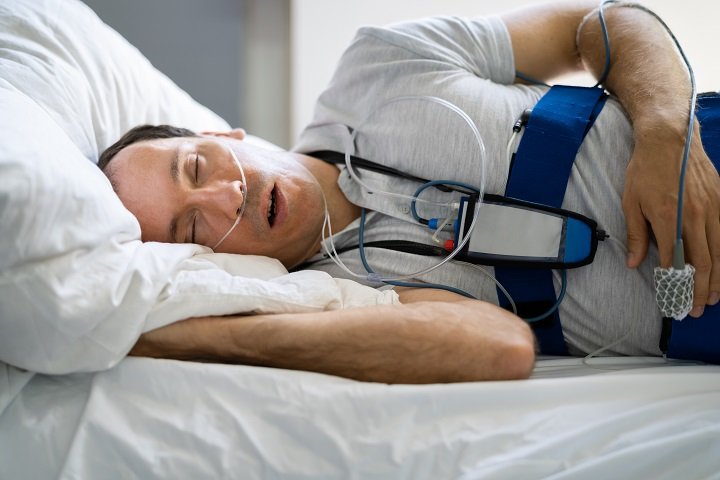Restless Legs Syndrome (RLS) is a neurological disorder characterized by an uncontrollable urge to move the legs, often accompanied by uncomfortable sensations. This condition can disrupt sleep, cause discomfort, and negatively impact overall well-being. While the exact cause of RLS is not fully understood, research has shown that regular exercise can play a significant role in managing and alleviating its symptoms. In this article, we will explore the benefits of exercise for individuals with Restless Legs Syndrome and provide practical tips on incorporating physical activity into your routine.
1. Improved Circulation: Exercise promotes better blood circulation throughout the body, including the legs. This increased blood flow can help reduce the discomfort and restless sensations often experienced with RLS. By improving circulation, exercise can potentially alleviate symptoms and provide relief.
2. Reduction in Muscle Tension: Engaging in physical activity helps release built-up muscle tension, which is a common symptom of Restless Legs Syndrome. Exercise promotes relaxation and stretching of the leg muscles, reducing stiffness and discomfort. Incorporating both aerobic exercises and targeted stretching routines can be particularly beneficial for relieving muscle tension associated with RLS.
3. Dopamine Release: Exercise stimulates the release of endorphins, including dopamine, in the brain. Dopamine is a neurotransmitter involved in the regulation of movement and is thought to play a role in RLS. By engaging in regular exercise, individuals with RLS may experience an increase in dopamine levels, which can help alleviate symptoms and improve overall well-being.
4. Improved Sleep Quality: Restless Legs Syndrome often disrupts sleep, leading to fatigue and daytime drowsiness. Regular exercise has been shown to improve sleep quality and duration, helping individuals with RLS get a more restful night’s sleep. By incorporating exercise into your routine, you may experience better sleep patterns and reduced RLS symptoms at night.
5. Stress Reduction: Stress and anxiety can exacerbate Restless Legs Syndrome symptoms. Exercise is known to be a natural stress reliever, as it triggers the release of endorphins and promotes relaxation. Engaging in physical activity can help manage stress levels, potentially leading to a reduction in RLS symptoms.
Practical Tips for Exercising with Restless Legs Syndrome:
1. Choose Low-Impact Activities: Opt for low-impact exercises that are gentle on the joints and muscles, such as walking, swimming, cycling, or using an elliptical machine. These activities provide cardiovascular benefits without putting excessive strain on the legs.
2. Stretching and Flexibility Exercises: Incorporate stretching exercises that specifically target the leg muscles. Focus on stretching the calves, hamstrings, and quadriceps to reduce muscle tension and increase flexibility. Yoga and Pilates can be particularly helpful for improving flexibility and promoting relaxation.
3. Consistency is Key: Aim for regular exercise sessions, ideally on most days of the week. Consistency is crucial for reaping the benefits of exercise for RLS. Start with shorter sessions and gradually increase the duration and intensity as tolerated.
4. Timing Matters: Some individuals with RLS find that exercising earlier in the day, rather than closer to bedtime, helps minimize symptoms at night. Experiment with different exercise timings to find what works best for you.
5. Listen to Your Body: Pay attention to your body’s signals and adjust the intensity or duration of your workouts accordingly. If you experience increased discomfort or pain during or after exercise, modify your routine or seek guidance from a healthcare professional.
6. Stay Hydrated: Proper hydration is essential for overall health and muscle function. Drink an adequate amount of water before, during, and after exercise to prevent dehydration and support optimal muscle performance.
It’s important to note that while exercise can be beneficial for managing Restless Legs Syndrome, it may not completely eliminate symptoms for everyone. Each individual’s response to exercise may vary, and it may take time to find the right balance and routine that works best for you. It is recommended to consult with a healthcare professional before starting any exercise program, especially if you have any underlying medical conditions or concerns.
In addition to exercise, it’s important to adopt a comprehensive approach to managing Restless Legs Syndrome. This may include following a healthy lifestyle, maintaining a consistent sleep schedule, practicing stress management techniques, and considering other treatment options as advised by your healthcare provider.
In conclusion, exercise can play a significant role in alleviating symptoms of Restless Legs Syndrome. By improving circulation, reducing muscle tension, promoting dopamine release, improving sleep quality, and reducing stress levels, regular physical activity can contribute to a better overall management of RLS. Remember to start slowly, choose low-impact activities, and listen to your body. With perseverance and the guidance of a healthcare professional, you can incorporate exercise as part of your comprehensive strategy for managing Restless Legs Syndrome and improving your quality of life.





